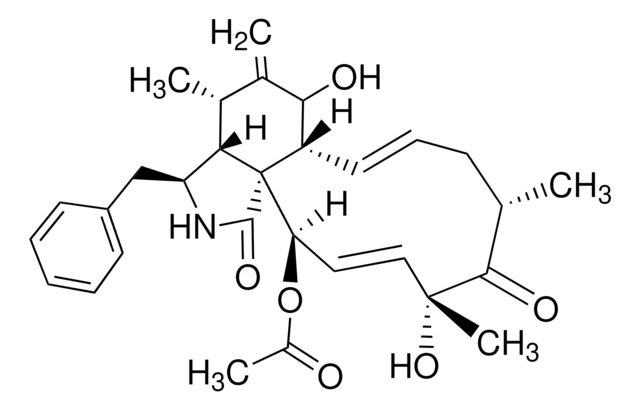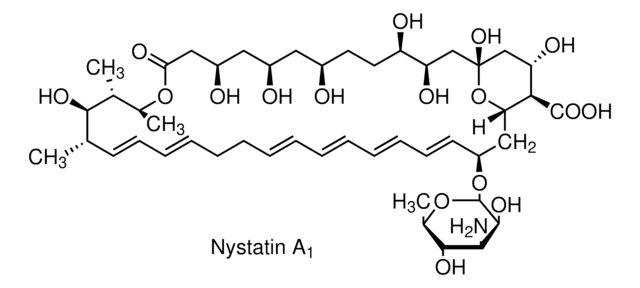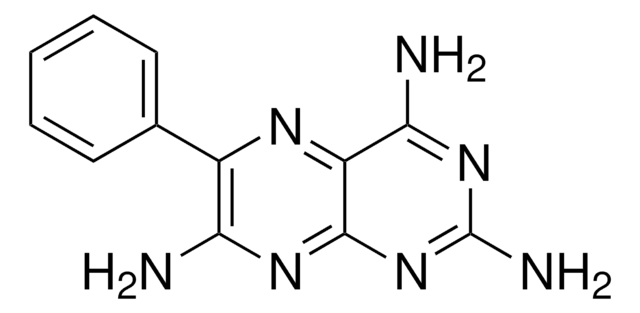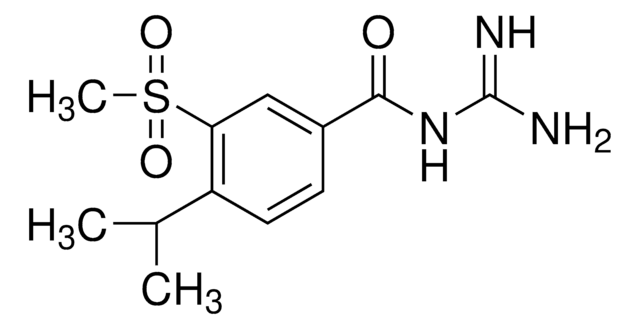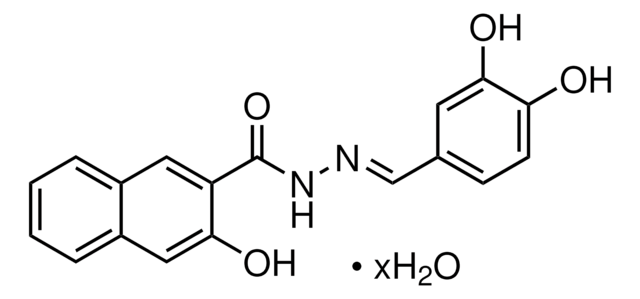A7410
Amiloride hydrochloride hydrate
≥98% (HPLC), powder, T-type calcium channel blocker
Sinónimos:
N-Amidino-3,5-diamino-6-chloropyrazinecarboxamide hydrochloride hydrate
About This Item
Productos recomendados
product name
Amiloride hydrochloride hydrate, ≥98% (HPLC), powder
Quality Level
assay
≥98% (HPLC)
form
powder
color
yellow
mp
285-288 °C (dec.)
solubility
H2O: 50 mg/mL, clear, yellow-green
originator
Perrigo
storage temp.
room temp
SMILES string
O.Cl.NC(=N)NC(=O)c1nc(Cl)c(N)nc1N
InChI
1S/C6H8ClN7O.ClH.H2O/c7-2-4(9)13-3(8)1(12-2)5(15)14-6(10)11;;/h(H4,8,9,13)(H4,10,11,14,15);1H;1H2
InChI key
WDZJJRLYFQNCQL-UHFFFAOYSA-N
Gene Information
human ... ABP1(26) , ACCN1(40) , ACCN2(41) , PLAU(5328) , SCNN1A(6337) , SCNN1B(6338) , SCNN1D(6339) , SCNN1G(6340) , SLC9A1(6548) , TNF(7124)
mouse ... Abp1(76507) , Accn1(11418) , Accn2(11419) , Plau(18792) , Scnn1a(20276) , Scnn1b(20277) , Scnn1d(140501) , Scnn1g(20278) , Slc9a1(20544)
rat ... Abp1(65029) , Accn1(25364) , Accn2(79123) , Plau(25619) , Scnn1a(25122) , Scnn1b(24767) , Scnn1g(24768) , Slc9a1(24782)
Application
Biochem/physiol Actions
Features and Benefits
Caution
signalword
Danger
hcodes
Hazard Classifications
Acute Tox. 3 Oral
Storage Class
6.1C - Combustible acute toxic Cat.3 / toxic compounds or compounds which causing chronic effects
wgk_germany
WGK 3
flash_point_f
Not applicable
flash_point_c
Not applicable
ppe
Eyeshields, Faceshields, Gloves, type P2 (EN 143) respirator cartridges
Certificados de análisis (COA)
Busque Certificados de análisis (COA) introduciendo el número de lote del producto. Los números de lote se encuentran en la etiqueta del producto después de las palabras «Lot» o «Batch»
¿Ya tiene este producto?
Encuentre la documentación para los productos que ha comprado recientemente en la Biblioteca de documentos.
Los clientes también vieron
Contenido relacionado
Discover Bioactive Small Molecules for ADME/Tox
Nuestro equipo de científicos tiene experiencia en todas las áreas de investigación: Ciencias de la vida, Ciencia de los materiales, Síntesis química, Cromatografía, Analítica y muchas otras.
Póngase en contacto con el Servicio técnico


